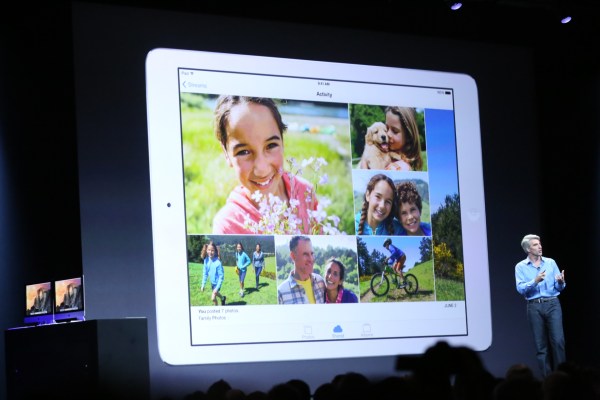At its WWDC keynote earlier this week, Apple announced CloudKit, a new, “effectively free” developer framework that lets app creators tap into Apple’s iCloud so that they can more easily work cloud components into their mobile apps.
As Quartz’s Dan Frommer pointed out this morning, it was one of several signs during the keynote that Apple finally “gets” the cloud.
But it’s also a sign that Apple is taking the concerns of iOS and Mac developers more seriously than ever. Just last year, Matthew Panzarino wrote that there were really two iClouds: the massive, mostly reliable infrastructure that Apple builds its apps on top of, and the hodgepodge of networking and syncing protocols that developers were handed with the first iterations of iCloud.
Because it wasn’t using the same underlying technology, Apple didn’t run into the same issues in features like Core Data syncing as your average iOS application developer, and thus didn’t take their problems as seriously. As Panzarino wrote:
One thing that could help is if Apple dogfooded more of iCloud’s developer API features in its own apps. Dogfooding, the process of a company using its own creations internally, is a well-respected method of ensuring maturity and stability, especially in complex services like iCloud. Apple currently only uses Core Data syncing in its iTunes Trailers app, which serves a lot of video but isn’t exactly the most complicated application. Because Apple doesn’t use these features of the API as much, it doesn’t run across the problems that are being run up against by developers.
The result was that many developers simply gave up on iCloud for their own apps and instead began to roll their own cloud syncing functions or integrating competing services from Amazon, Dropbox, or Google.
It seems that Apple’s hoping to change that. As Andreessen Horowitz analyst Benedict Evans wrote on Wednesday, the company showed off a bunch of impressive cloud-based functions in iOS 8 — and they’re built on the same CloudKit frameworks that anyone who downloads Apple’s tools has access to:
Hence one could suggest that Apple loves the cloud, just not the web (or, not URLs). This is obviously a contrast with Google, which has pretty much the opposite approach. For Google, devices are dumb glass and the intelligence is in the cloud, but for Apple the cloud is just dumb storage and the device is the place for intelligence. And it’s built a whole new set of APIs, CloudKit, to enable this for developers, which it is (for the first time, I believe) dogfooding, building the photos product on it.
The new photo editing tools in iOS 8 aren’t the only new features built on frameworks that anyone can use. The company also says that the new “Handoff” feature in Keynote, Safari, Mail, Maps, Contacts, Notes, and Reminders (which lets you seamlessly move between apps on your iPhone and your Mac to complete a task) is built on the same public APIs available to third-party developers.
Everyone benefits from Apple and third-party developers working on the same playing field. Apple will spend more time making sure that its frameworks for developers work in order to keep the quality of its own apps up to snuff, while developers won’t shy away from adding convenient cloud components that “just work” behind the scenes.
